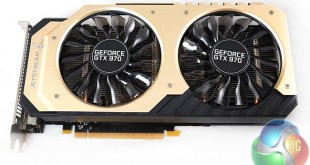
Nvidia launched their new GTX970 and GTX980 solutions last week, and there is no doubt that they have pushed the ‘performance to watt' ratio to a new level. We have already reviewed the reference GTX980, the ASUS StriX GTX970 and the MSI GTX970 Gaming 4G. Today we look at the Palit GTX970 JetStream which actually features the highest overclock of them all- out of the box.
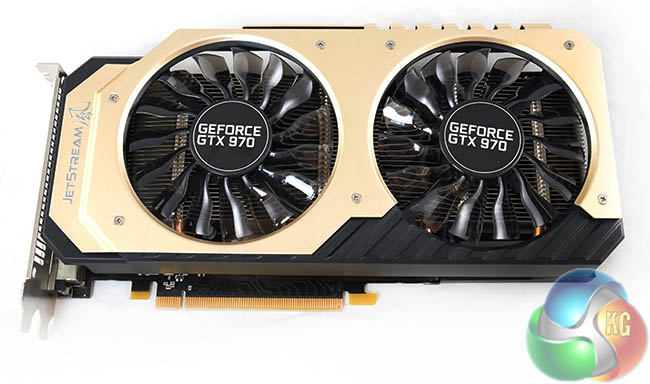
The Palit GTX970 Jetstream ships with a gold and black cooler. Gold is a colour that generally doesn't appeal to European tech readers, however the Far East readers seem to find it more appealing. I think it looks fine, but it does pale in comparison next to the beautiful MSI GTX970 Gaming 4G.
Even though we have a handful of reviews already published, Nvidia’s Maxwell architecture deserves a little discussion before we get into testing the Palit GTX970. If you are a regular reader of KitGuru then you will already have studied our multiple analysis of the lower level GTX750Ti solution throughout the year.
The GTX750ti has been one of the most exciting cards that Nvidia have released in recent years – performance is close to the HD7850 while consuming half the power at the socket – and all without the need for a PCIe power cable. It produces such a modest heat emission that the Asus GTX750Ti Strix OC we reviewed recently didn’t need to spin the fans most of the time, even when gaming.
The Maxwell architecture has been designed to deliver twice the performance per watt of previous generation Geforce hardware. It sounds easy enough on paper to achieve, but the real world challenges for Nvidia have been complex.
| GPU | GeForce GTX 680 (Kepler) | GeForce GTX 980 (Maxwell) | Geforce GTX 970 (Maxwell) |
| Streaming Multiprocessors | 8 | 16 | 13 |
| CUDA Cores | 1536 | 2048 | 1664 |
| Base Clock | 1006 mhz | 1126 mhz | 1050 mhz |
| GPU Boost Clock | 1058 mhz | 1216 mhz | 1178 mhz |
| Total Video memory | 2GB | 4GB | 4GB |
| Texel fill-rate | 129 Gigatexels/Sec | 144.1 Gigatexels/Sec | 109.2 Gigatexels/Sec |
| Memory Clock | 6000 mhz | 7000 mhz | 7000 mhz |
| Memory Bandwidth | 192 GB/sec | 224 GB/sec | 224 GB/s |
| ROPs | 32 | 64 | 64 |
| Manufacturing Process | 28nm | 28nm | 28nm |
| TDP | 195 watts | 165 watts | 145 watts |
The new GM204 GPU is very efficient. The Maxwell SM has been rebalanced so that the CUDA cores are fully utilised more often. Doing so saves power and enhances overall performance. The L2 cache size in the GM204 is 2MB, or four times larger than the GK104. The addition of extra cache means that fewer requests to the GPU memory are needed – again reducing power consumption and pushing more performance.
The Geforce GTX 970 is equipped with 7Gbps memory. Those of you with higher resolution monitors, or running in a multi screen configuration will also be pleased to hear that there is 4GB of GDDR5 memory on the card, not 3GB – this memory will push 224 GB/s sec. Nvidia have added a new compression engine to reduce the demand on DRAM bandwidth.
The Palit GTX970 JetStream OC has received a core clock enhancement to 1,152mhz, from 1,050mhz on the reference design. The GDDR5 memory remains untouched, as we would expect – its certainly not going to be a bottleneck.
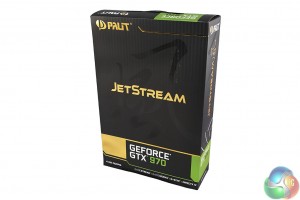
The Palit GTX970 Jetstream ships in a plain box with ‘JetStream' highlighted in gold lettering. Its a fairly bland looking box, but as the majority of graphics cards are bought online now, it hardly seems an issue.
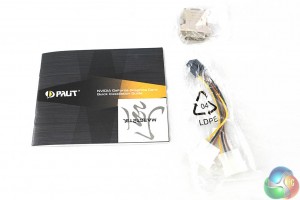
The bundle includes literature on the product, along side a power converter cable and video adapter. Palit include a sticker as well.
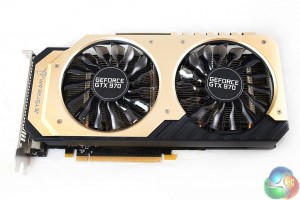
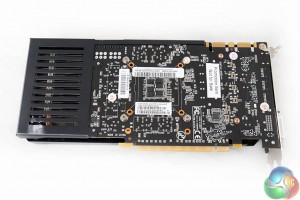
The Palit GTX970 JetStream is a dual slot, two tone card, based around a black and gold cooler. The PCB is black. Two large fans are set in parallel to deliver cooling to the PCB underneath.
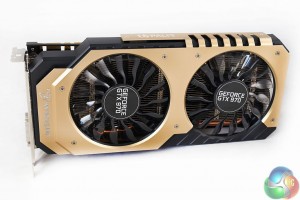
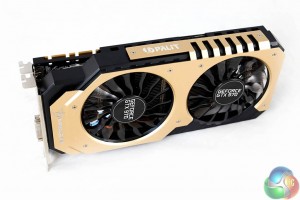
The Palit GTX970 JetStream reflects light a little depending on the angle. The cooler actually feels a little flimsy beside the ASUS Strix and MSI Gaming 4G versions of the GTX970. Partially because the black extension plate on the rear of the PCB moves easily when you apply even modest pressure.
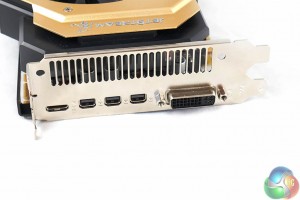
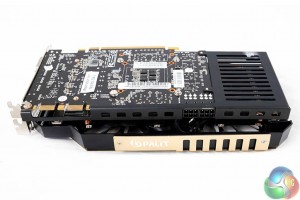
Palit have adopted a different I/O backplate configuration to both MSI and ASUS. Instead of dual DVI and a full sized HDMI and DisplayPort they have opted for 3 x mini DisplayPort connectors and a mini HDMI port.
If you plan on using the DisplayPort connector on your monitor you will need a Mini DisplayPort to DisplayPort converter. Palit should really have included one of these converters in the box. The same thing applies to the mini HDMI port on the card – you will need a converter cable which is not included in the box.
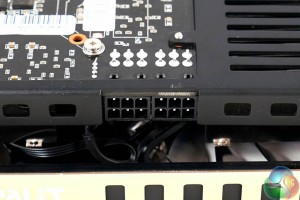
The Palit GTX970 takes power from two 6 Pin PCIe connectors, shown above – these are placed just before the extension plate at the end of the PCB.
Unfortunately they are rather fiddly to get to as the cables connect in a reverse position – with the plug catch pointing towards the cooler at the front of the card. Removing the power cables is frustrating as you need to get a finger inside to the catch between the fan in front.
This really is rather unnecessary.
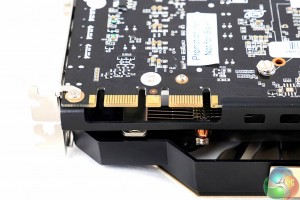
The card is fully SLi capable, as shown above.
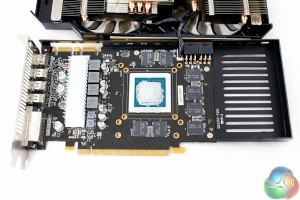
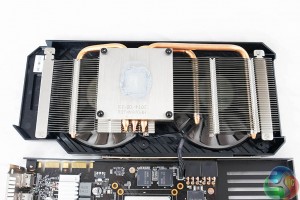
The Jetstream cooler doesn't look quite as beefy as either the STRIX Direct CU II cooler on the ASUS GTX970, or the Twin Frozr 5 cooler on the MSI GTX970. Three modest sized heatpipes run into aluminum fins on either side of the core.
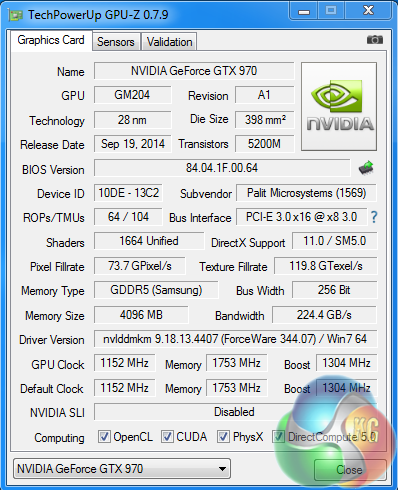
The GM204 GPU is manufactured on the 28nm process. There are 64 ROPS, 104 Texture units and 1,664 CUDA Cores. The core speed is clocked at 1,152mhz with a turbo boost to 1,279mhz. The 4GB of GDDR5 memory is clocked at 1,753mhz (7Gbps effective).
On this page we present some high resolution images of the product taken with a Fuji XT1 and a Sigma SD1 camera. These will take much longer to open due to the dimensions, especially on slower connections. If you use these pictures on another site or publication, please credit Kitguru.net as the owner/source.
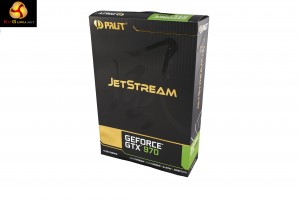
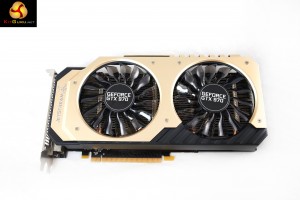
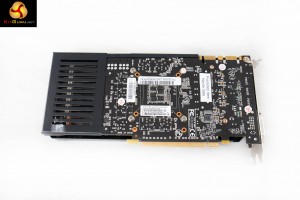
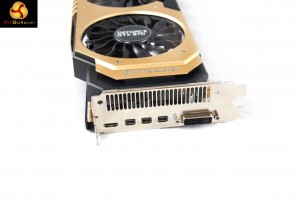
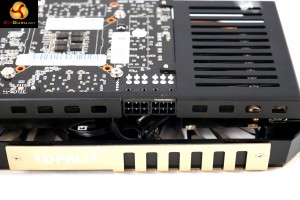
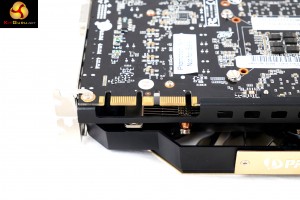
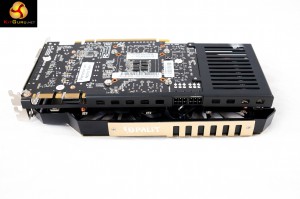
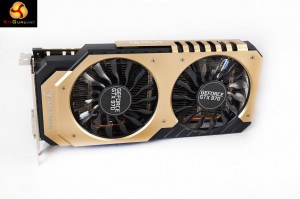
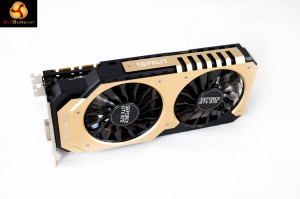
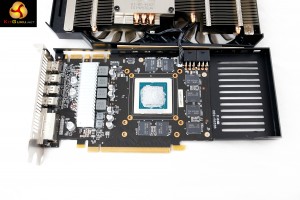
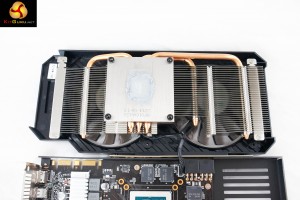
For the review today we are using the latest Nvidia Forceware 344.07 and AMD Catalyst 14.7 beta drivers. All of the AMD and Nvidia hardware in our reviews today used these drivers – tested this week before launch.
We are using one of our brand new test rigs supplied by DINOPC and built to our specifications. If you want to read more about this, or are interested in buying the same Kitguru Test Rig, check out our article with links on this page. We are using an Asus PB287Q 4k and Apple 30 inch Cinema HD monitor for this review today.
Comparison cards:
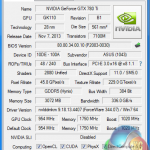
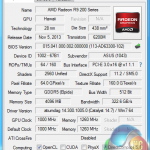
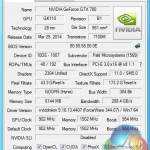
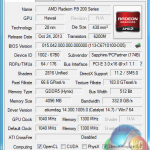
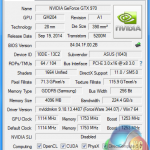
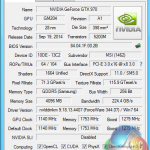

Asus GTX780 Ti Direct CU II OC (954mhz core / 1750 mhz memory)
Nvidia GTX980 Reference (1126 mhz core / 1753mhz memory)
Sapphire R9 290X Tri-X OC (1040 mhz core / 1300 mhz memory)
MSI GTX970 Gaming 4G (1140 mhz core / 1753 mhz memory)
Palit GTX780 6GB (902 mhz core / 1502mhz memory)
Asus GTX970 StriX OC (1114 mhz core / 1753 mhz memory)
Asus R9 290 Direct CU II OC (1000 mhz core / 1260 mhz memory)
Software:
Windows 7 Enterprise 64 bit
Unigine Heaven Benchmark
Unigine Valley Benchmark
3DMark Vantage
3DMark 11
3DMark
Fraps Professional
Steam Client
FurMark
Games:
Grid AutoSport
Tomb Raider
Metro Last Light Redux
Thief 2014
All the latest BIOS updates and drivers are used during testing. We perform generally under real world conditions, meaning KitGuru tests games across five closely matched runs and then average out the results to get an accurate median figure. If we use scripted benchmarks, they are mentioned on the relevant page.
Game descriptions edited with courtesy from Wikipedia.Futuremark released 3DMark Vantage, on April 28, 2008. It is a benchmark based upon DirectX 10, and therefore will only run under Windows Vista (Service Pack 1 is stated as a requirement) and Windows 7. This is the first edition where the feature-restricted, free of charge version could not be used any number of times. 1280×1024 resolution was used with performance settings.
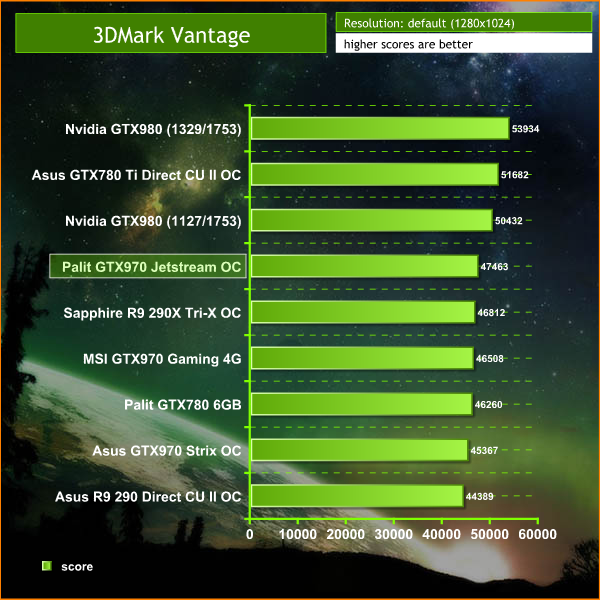
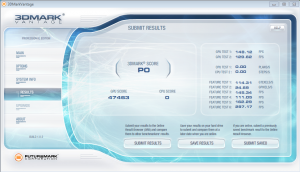
The system scores 47,463 points, slightly ahead of the Sapphire R9 290X Tri-X OC solution.
3DMark 11 is designed for testing DirectX 11 hardware running on Windows 7 and Windows Vista the benchmark includes six all new benchmark tests that make extensive use of all the new features in DirectX 11 including tessellation, compute shaders and multi-threading. After running the tests 3DMark gives your system a score with larger numbers indicating better performance. Trusted by gamers worldwide to give accurate and unbiased results, 3DMark 11 is the best way to test DirectX 11 under game-like loads. If you want to learn more about this benchmark, or to buy it yourself, head over to this page.
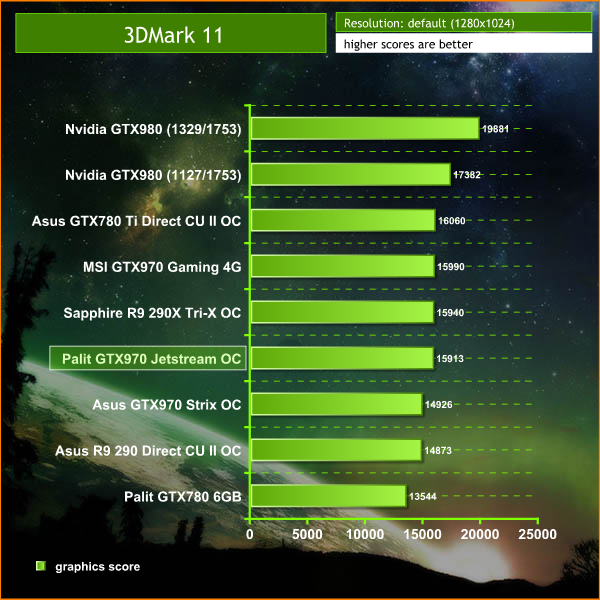
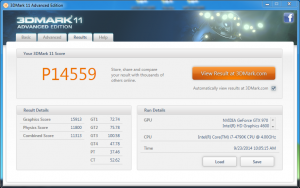
A graphics score of 15,913 points is very strong indeed, almost matching the Sapphire R9 290X Tri-X OC.
3DMark is an essential tool used by millions of gamers, hundreds of hardware review sites and many of the world’s leading manufacturers to measure PC gaming performance.
Futuremark say “Use it to test your PC’s limits and measure the impact of overclocking and tweaking your system. Search our massive results database and see how your PC compares or just admire the graphics and wonder why all PC games don’t look this good.
To get more out of your PC, put 3DMark in your PC.”
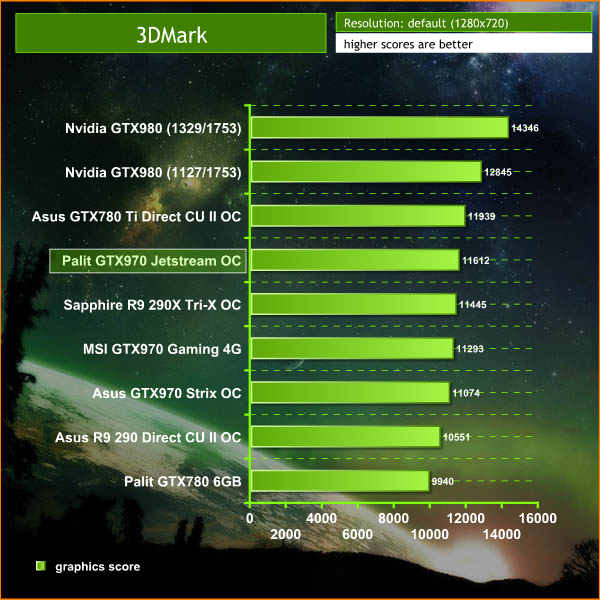
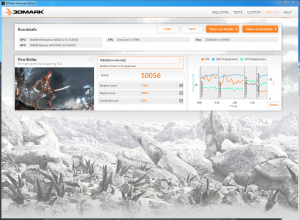
The latest Direct X 11 benchmark from Futuremark shows the Palit GTX970 JetStream scoring 11,612 points in the graphics test, around 300 points behind the Asus GTX780Ti Direct CU II OC.
Unigine provides an interesting way to test hardware. It can be easily adapted to various projects due to its elaborated software design and flexible toolset. A lot of their customers claim that they have never seen such extremely-effective code, which is so easy to understand.
Heaven Benchmark is a DirectX 11 GPU benchmark based on advanced Unigine engine from Unigine Corp. It reveals the enchanting magic of floating islands with a tiny village hidden in the cloudy skies. Interactive mode provides emerging experience of exploring the intricate world of steampunk. Efficient and well-architected framework makes Unigine highly scalable:
- Multiple API (DirectX 9 / DirectX 10 / DirectX 11 / OpenGL) render
- Cross-platform: MS Windows (XP, Vista, Windows 7) / Linux
- Full support of 32bit and 64bit systems
- Multicore CPU support
- Little / big endian support (ready for game consoles)
- Powerful C++ API
- Comprehensive performance profiling system
- Flexible XML-based data structures

We set Quality to ‘High', Tessellation to ‘Normal' and resolution to 1600p.
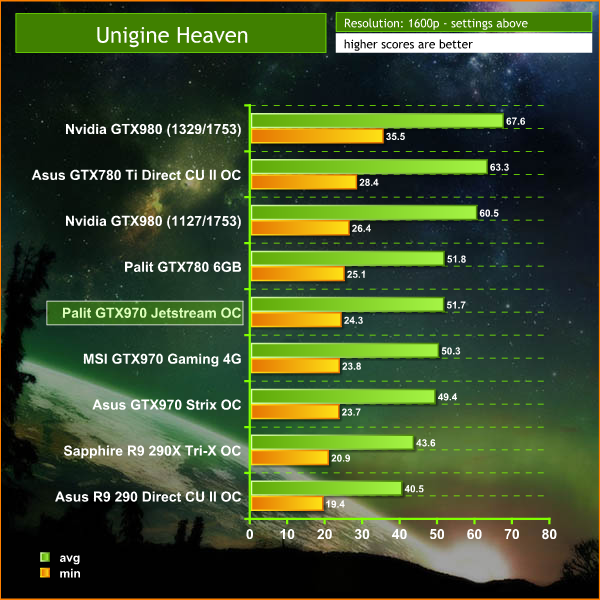
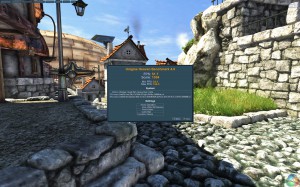
Performance from the Palit GTX970 JetStream OC is very closely matched with the Palit GTX780 6GB – only a tenth of a frame worse actually.Valley Benchmark is a new GPU stress-testing tool from the developers of the very popular and highly acclaimed Heaven Benchmark. The forest-covered valley surrounded by vast mountains amazes with its scale from a bird’s-eye view and is extremely detailed down to every leaf and flower petal. This non-synthetic benchmark powered by the state-of-the art UNIGINE Engine showcases a comprehensive set of cutting-edge graphics technologies with a dynamic environment and fully interactive modes available to the end user.
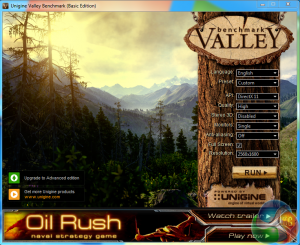
We toggle quality to HIGH, and resolution to 1600p.
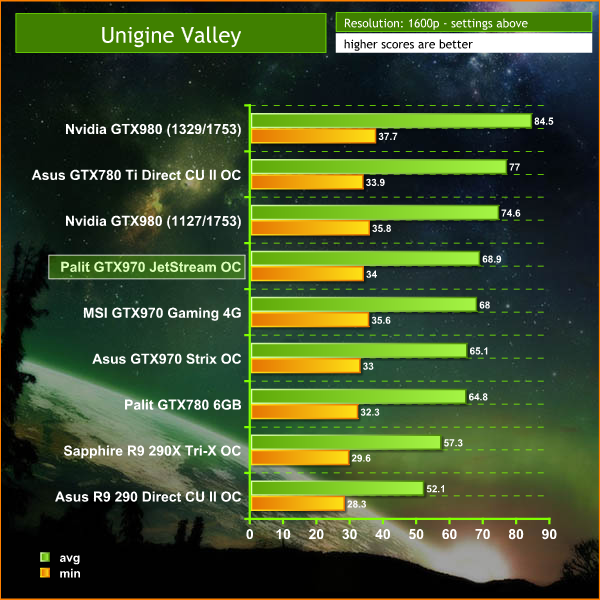

Another great result from the Palit GTX970 Jetstream OC, averaging just under 69 frames per second.Grid Autosport (styled as GRID Autosport) is a racing video game by Codemasters and is the sequel to 2008′s Race Driver: Grid and 2013′s Grid 2. The game was released for Microsoft Windows, PlayStation 3 and Xbox 360 on June 24, 2014. (Wikipedia).



On this page we test at 1080p and 1600p using the ‘Ultra' image quality profile with 8x MSAA.
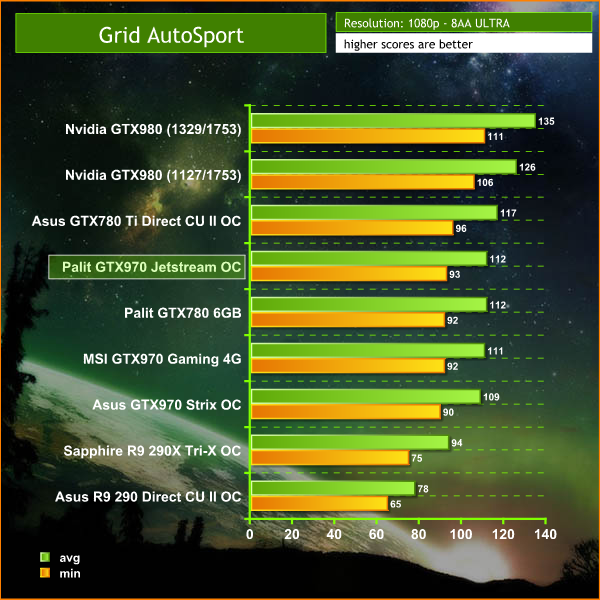

At 1600p the Palit GTX780 JetStream OC is pretty much a match for the GTX780Ti Direct CU II OC, averaging 82 frames per second.Grid Autosport (styled as GRID Autosport) is a racing video game by Codemasters and is the sequel to 2008′s Race Driver: Grid and 2013′s Grid 2. The game was released for Microsoft Windows, PlayStation 3 and Xbox 360 on June 24, 2014. (Wikipedia). 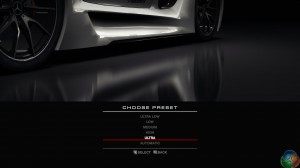
We test at Ultra HD 4k with 8MSAA. The Ultra Profile is selected for maximum image quality. 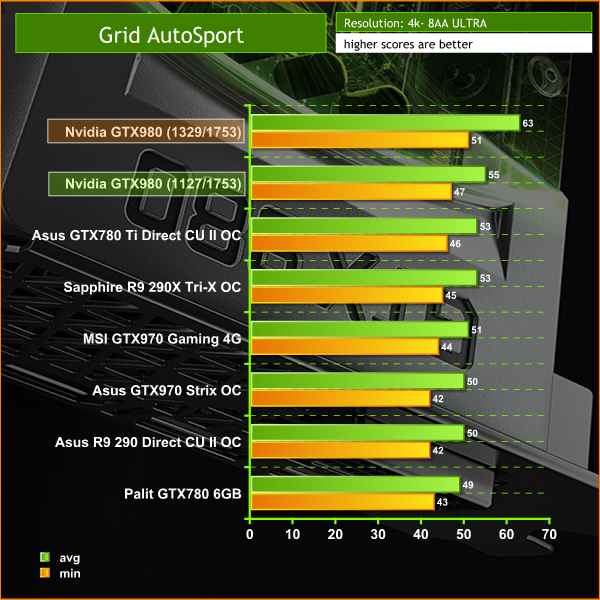
At Ultra HD 4k the Palit GTX970 JetStream OC manages to produce playable frame rate, even at high image quality settings.Thief is set in a dark fantasy world inspired by Victorian, gothic, and steampunk aesthetics. Garrett, a master thief who has been away from his hometown for a long time, returns to it, a place known only as The City, and finds it ruled with an iron grip by a tyrant called The Baron. While The City is ravaged by a plague, the rich continue to live in isolation and good fortune while the poor are forming numerous mobs against the authorities, Garrett intends to use the volatile situation to his favor. (Wikipedia).
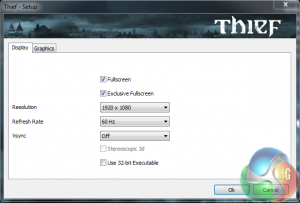
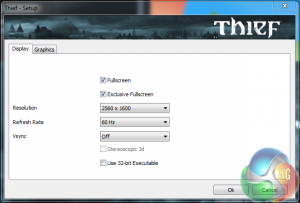
We test with the ‘very high' image quality preset at 1080p and 1600p.
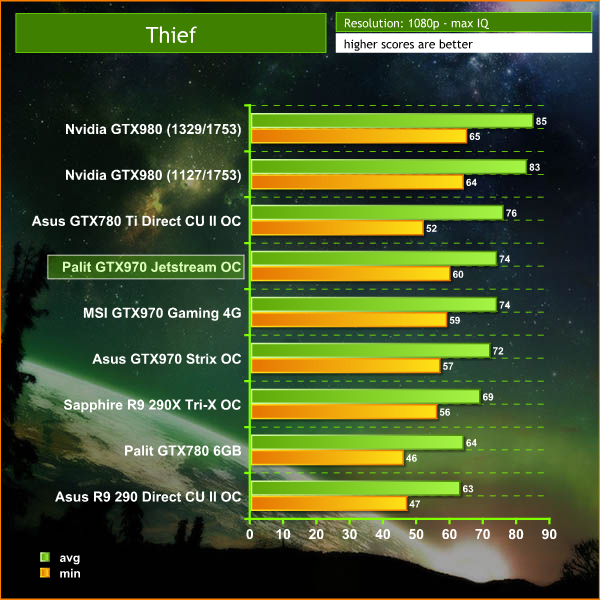
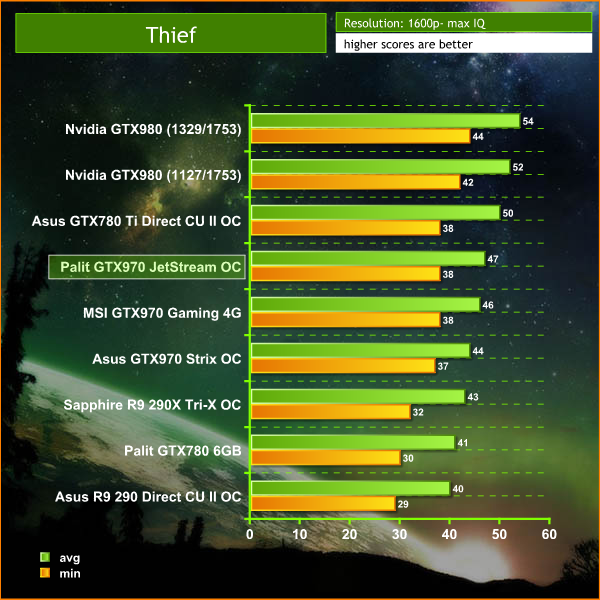
A demanding engine, especially as the resolution increases to 1600p. Still, the frame rate holds above 35 at all times.Thief is set in a dark fantasy world inspired by Victorian, gothic, and steampunk aesthetics. Garrett, a master thief who has been away from his hometown for a long time, returns to it, a place known only as The City, and finds it ruled with an iron grip by a tyrant called The Baron. While The City is ravaged by a plague, the rich continue to live in isolation and good fortune while the poor are forming numerous mobs against the authorities, Garrett intends to use the volatile situation to his favor. (Wikipedia).
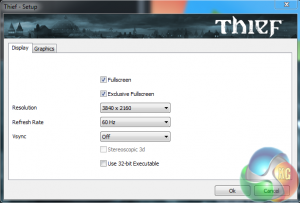
We test at the ‘very high' preset for maximum image quality. Resolution is set to 4k for this particular test.
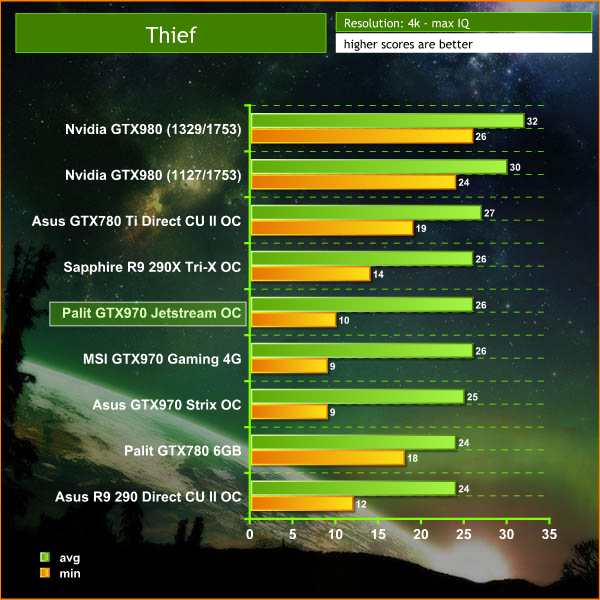
The frame rate falls significantly at Ultra HD 4k resolutions, dropping to 10 frames per second. Not really playable – leaving the manually overclocked Nvidia GTX980 as the only solution to hold 25+ frame rates at all times.Tomb Raider received much acclaim from critics, who praised the graphics, the gameplay and Camilla Luddington’s performance as Lara with many critics agreeing that the game is a solid and much needed reboot of the franchise. Much criticism went to the addition of the multiplayer which many felt was unnecessary. Tomb Raider went on to sell one million copies in forty-eight hours of its release, and has sold 3.4 million copies worldwide so far. (Wikipedia).
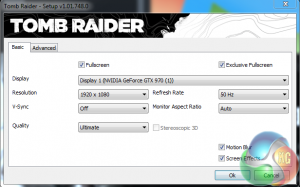
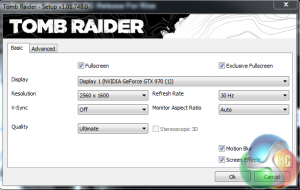
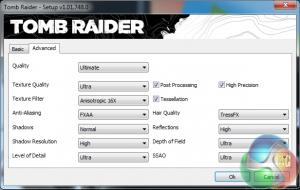
We test with the ‘ultimate' image quality profile at 1080p and 1600p.
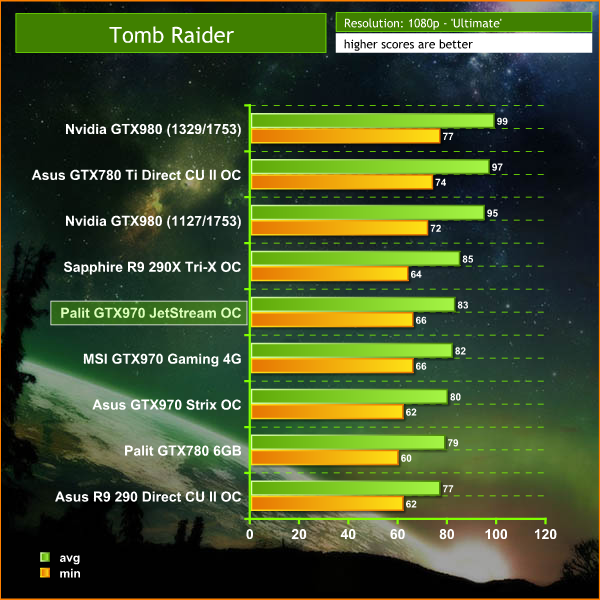

Excellent performance and fully playable at both 1080p and 1600p resolutions – with the image quality maxed. Tomb Raider received much acclaim from critics, who praised the graphics, the gameplay and Camilla Luddington’s performance as Lara with many critics agreeing that the game is a solid and much needed reboot of the franchise. Much criticism went to the addition of the multiplayer which many felt was unnecessary. Tomb Raider went on to sell one million copies in forty-eight hours of its release, and has sold 3.4 million copies worldwide so far. (Wikipedia).


We test at Ultra HD 4k resolution with the ‘Ultra' image profile enabled. Single GPU solutions find the ‘Ultimate' image quality preset too difficult to power properly.

At Ultra HD 4k resolution, the Palit GT970 JetStream OC holds a solid 30+ frame rate throughout. Impressive considering the price point.On May 22, 2014, a Redux version of Metro Last Light was announced. It was released on August 26, 2014 in North America and August 29, 2014 in Europe for the PC, PlayStation 4 and Xbox One. Redux adds all the DLC and graphical improvements. A compilation package, titled Metro Redux, was released at the same time which includes Last Light and 2033. (Wikipedia). We test with following settings: Quality-Very High, SSAA-off, Texture Filtering-16x, Motion Blur-Normal, Tessellation-Normal, Advanced Physx-On.


A great looking game that runs well on Nvidia hardware. No problems powering the game at either 1080p or 1600p. The big test comes next however.On May 22, 2014, a Redux version of Metro Last Light was announced. It was released on August 26, 2014 in North America and August 29, 2014 in Europe for the PC, PlayStation 4 and Xbox One. Redux adds all the DLC and graphical improvements. A compilation package, titled Metro Redux, was released at the same time which includes Last Light and 2033. (Wikipedia). We test with following settings: Quality-High, SSAA-off, Texture Filtering-16x, Motion Blur-off, Tessellation-Normal, Advanced Physx-off. 
The engine proves demanding at 4k, we would need to lower the image quality a little to get perfectly smooth frame rates at such a high resolution.The tests were performed in a controlled air conditioned room with temperatures maintained at a constant 23c – a comfortable environment for the majority of people reading this.Idle temperatures were measured after sitting at the desktop for 30 minutes. Load measurements were acquired by playing Crysis Warhead for 30 minutes and measuring the peak temperature. We also have included Furmark results, recording maximum temperatures throughout a 30 minute stress test. All fan settings were left on automatic.


The Palit GTX970 Jetstream is set up rather unusually. The fans don't spin until the temperatures hit 68c, which seems rather high to me. When gaming, the fans tend to spin a little from time to time and then stop. Tomb Raider does force them to spin constantly, but it will vary from title to title — related to how much the game engine is stressing the hardware.
The cooler is falling quite a distance behind the Twin Frozr5 on the MSI GTX970 Gaming 4G and the Direct CU II cooler on the Asus Strix OC. The fans only spin at 1,200rpm when gaming in Tomb Raider and 1,400rpm under Furmark load.
After some experimentation we definitely feel that between 1,500rpm and 1,700rpm would have helped improve the balance of temperature v noise.We have built a system inside a Lian Li chassis with no case fans and have used a fanless cooler on our CPU. The motherboard is also passively cooled. This gives us a build with almost completely passive cooling and it means we can measure noise of just the graphics card inside the system when we run looped 3dMark tests.
We measure from a distance of around 1 meter from the closed chassis and 4 foot from the ground to mirror a real world situation. Ambient noise in the room measures close to the limits of our sound meter at 28dBa. Why do this? Well this means we can eliminate secondary noise pollution in the test room and concentrate on only the video card. It also brings us slightly closer to industry standards, such as DIN 45635.
KitGuru noise guide
10dBA – Normal Breathing/Rustling Leaves
20-25dBA – Whisper
30dBA – High Quality Computer fan
40dBA – A Bubbling Brook, or a Refrigerator
50dBA – Normal Conversation
60dBA – Laughter
70dBA – Vacuum Cleaner or Hairdryer
80dBA – City Traffic or a Garbage Disposal
90dBA – Motorcycle or Lawnmower
100dBA – MP3 player at maximum output
110dBA – Orchestra
120dBA – Front row rock concert/Jet Engine
130dBA – Threshold of Pain
140dBA – Military Jet takeoff/Gunshot (close range)
160dBA – Instant Perforation of eardrum

As we discussed on the last page, the fans on the Palit GTX970 JetStream don't actually activate until the core is loaded to around 68c. Depending on the ambient temperatures and the load demand of the game engine, there are times when the fans don't actually spin at all. This is the only GTX970 we have tested that does this. Games such as Tomb Raider however push the Maxwell GPU hard – and the fans will spin. It varies from game to game.
While this card is extremely quiet when gaming, the adverse side effect is a climb in temperatures under load – it is always running hotter than the ASUS or MSI GTX970 cards (see previous page for more details on this).
Personally I feel Palit have got the balance slightly wrong – I would have preferred slightly cooler running temperatures because the difference in real world noise levels between 28 dBa and 32 dBa is not that noticeable at all. Again if you value the lowest noise levels then the hotter running temperatures may not be that big a deal. To test power consumption today we are using a Keithley Integra unit and we measure power consumption from the VGA card inputs, not the system wide drain. We measure results while gaming in Tomb Raider at 4k resolution and the synthetic stress test Furmark – recording both results. 
We already know how efficient the Maxwell architecture is. AMD need a new architecture to become competitive again. It really is as simple as that.To overclock today we are using the latest V4.0.0 of MSI's Afterburner based on the excellent Rivatuner. 
We overrode the default fan settings on the Palit GTX970 JetStream via MSI Afterburner. As we discussed before, the fans on this card don't enable until around 68c load. When overclocking, we wanted the fans active all the time, especially as the temperature curve increased faster. We set the fans to 1,700rpm.
We managed to push the GTX970 core to a Boost speed of 1,400mhz. Great results, but a little behind both ASUS and MSI GTX970 solutions reviewed last week.


This overclock helped boost the graphics scores in 3DMARK11 from 15,913 points to 17,040 points. At this speed the card scored higher than the ‘out of the box' performance of the Asus GTX780 Ti Direct CU II OC.The Palit GTX970 JetStream OC is the third partner solution we have looked at since Nvidia launched their new Maxwell architecture last week. This card is the quietest of the three we have tested to date making it ideal for the gamer with a particular aversion to noise. That said, the MSI and ASUS GTX970s are also extremely quiet.
First impressions of the Palit GTX970 JetStream OC are rather mixed. I can't say I am a big fan of the gold and black cooler. There is nothing wrong with the colour gold per se – but I prefer it on fancy Swiss watches, not on gaming components. That said, I never warmed to the the gold coloured Asus motherboards either, so this is clearly a personal taste issue.
There is no doubt however when we compare the appearance of this card against the MSI GTX970 Gaming 4G – it does pale in comparison. The MSI GTX970 Gaming 4G is the Cameron Diaz of graphics cards, the Palit GTX980 JetStream is more akin to Paris Hilton dolled up for a night out on the town.

The Palit GTX970 JetStream OC is not quite so reassuring in hand either, when directly compared to the ASUS or MSI cards. The company have added a black plate extension to the PCB to match the length of the cooler above. In theory there is nothing wrong with this, but the plate flexes excessively under any pressure – even when mounting it into the PCIe slot on the motherboard. A direct mounting system from this plate to the cooler above would have helped.
Due to the PCB extension plate design the two 6 pin PCIe power connectors are mounted three quarters of the way along the full length below the second fan – and are reversed making life difficult when you want to connect or disconnect the cables. You have to shove your fingers between the fan and the PCB to try and press down on the clip while pulling out.
Negatively, we have to mark Palit down on the use of Mini DisplayPort connectors and a Mini HDMI connector. There are no full sized adapters in the box, so if you want to hook this GPU up to a 1080p HDTV, you need to buy a full sized HDMI adapter. Same thing for that shiny new DisplayPort monitor – none of these ship with mini cables, so its another trip to Ebay or Amazon. I had to hunt out an adapter myself to use with the ASUS PB287Q 4k screen but I have loads of spare adapter cables in a drawer. Palit should have bundled a Mini DisplayPort and Mini HDMI converter in the box – it would have cost them a few pence and saved much frustration.
While the Palit GTX970 JetStream OC is clocked the highest out of the box, the overclocking headroom is a little less than both ASUS and MSI cards which we reviewed days ago. It isn't much, but we expected more. Part of the issue is likely due to the hotter running temperatures and the weaker cooling system fitted to the card.
Negatives aside, the Palit GTX970 JetStream is a phenomenal performer and when overclocked to the limit the performance is in the same ballpark as the GTX780ti with a much lower power draw. If I had reviewed this a week ago, it would have earned our MUST HAVE award, but both Asus GTX970 Strix OC and MSI GTX970 Gaming 4G are superior solutions fitted with more formidable coolers. Subsequently due to this, and some poor design choices, we have to mark the score down a little.
You can buy the Palit GTX970 JetStream OC from OCUK for £275.99 inc vat.
Discuss on our Facebook page, over HERE.
Pros:
- eye catching.
- great performance out of the box.
- nice overclock.
- very quiet.
- fans disable below 68c.
- excellent additional overclocking headroom.
- £275 inc vat.
- 4GB of GDDR5 memory.
Cons:
- the gold colour may not appeal to everyone.
- hotter running than the MSI GTX970 Gaming 4G and ASUS GTX970 Strix OC.
- PCB extension plate moves excessively – should be mounted to the cooler above.
- fan profile could be a little more aggressive.
- 6 Pin power headers are reversed and not at the end of the card – fiddly to work with.
- Mini DisplayPort and Mini HDMI connectors – with no converters in the box.
Kitguru says: Another high performance GTX970 solution from an Nvidia partner. Some poor design choices by Palit lower the score a little, and the cooler isn't in the same league as the MSI Twin Frozr 5 or Asus Direct CU II fitted to competitor cards.

 KitGuru KitGuru.net – Tech News | Hardware News | Hardware Reviews | IOS | Mobile | Gaming | Graphics Cards
KitGuru KitGuru.net – Tech News | Hardware News | Hardware Reviews | IOS | Mobile | Gaming | Graphics Cards


